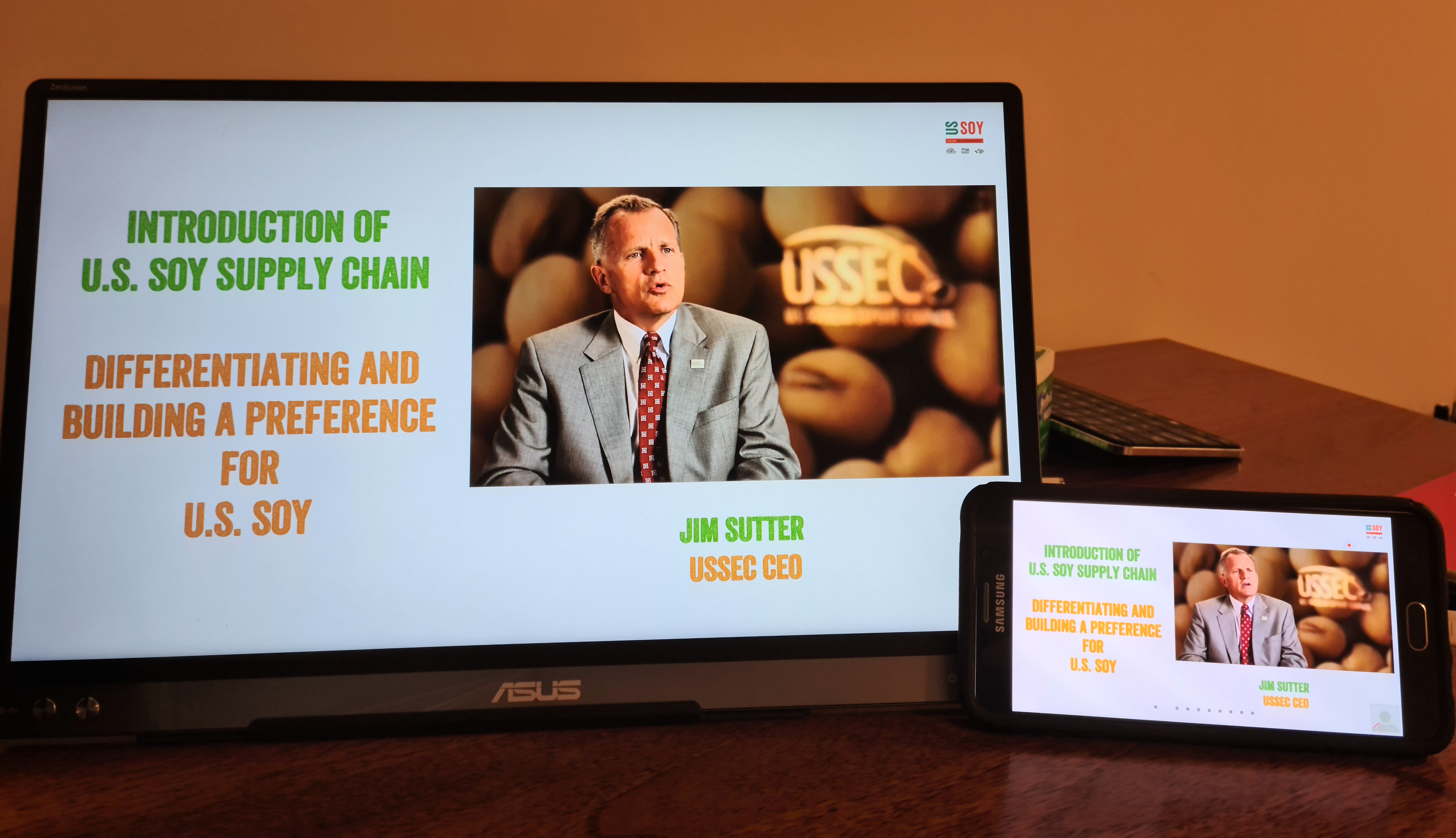Global U.S. Soy Customers Hear About Soy Harvest, Sustainable Production During USSEC Digital Events
- Category:
- Event followup
- General News
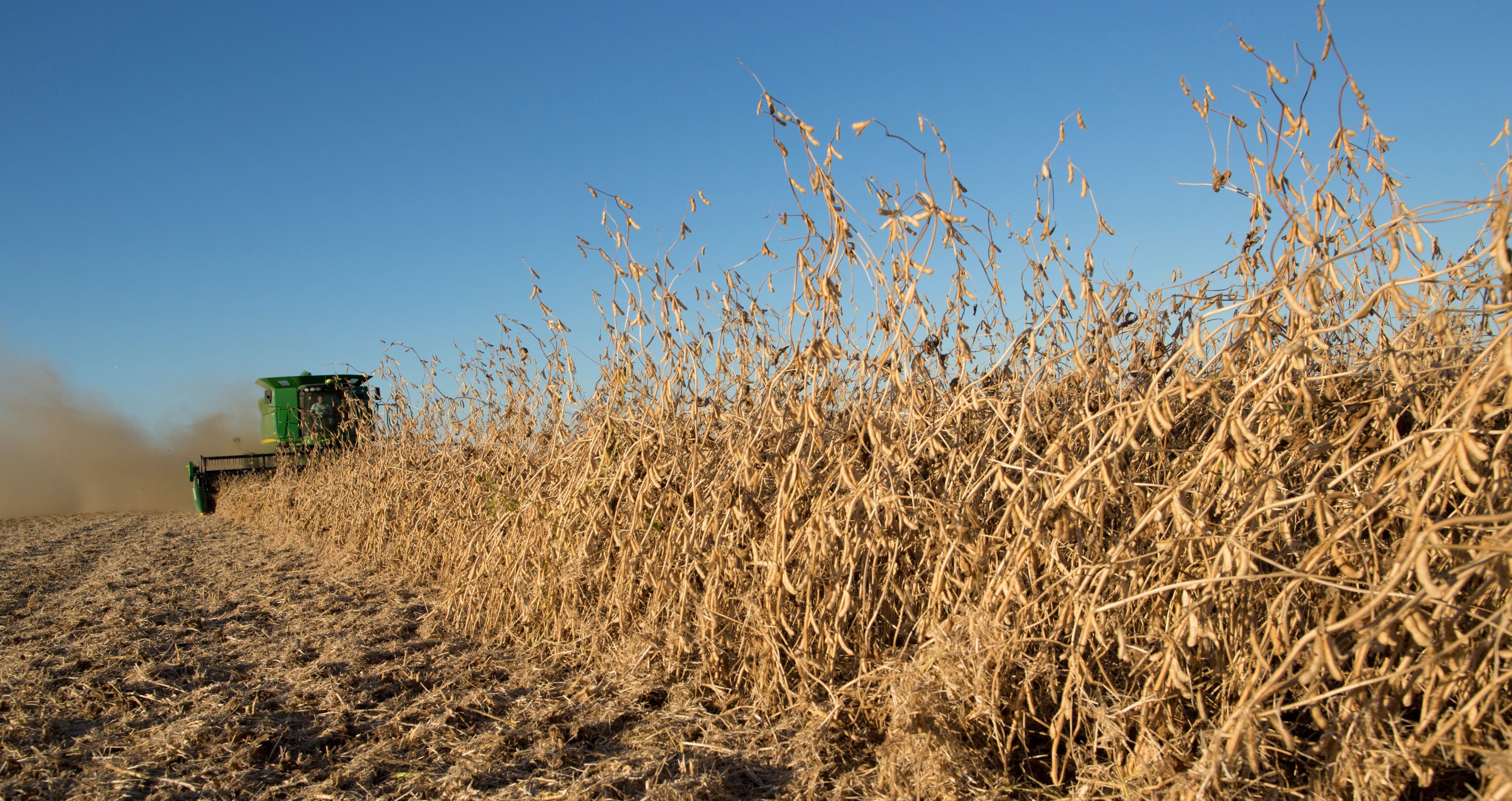
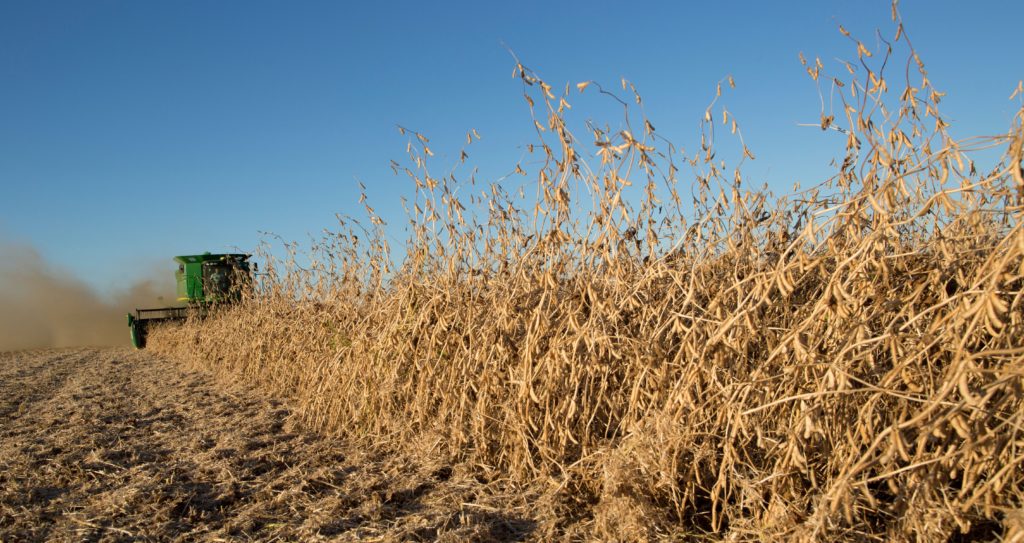
More than 600 attendees from 50 different countries participated in the Value-Added Soy Protein Ingredients and Soy Quality Control online conferences organized in September by USSEC’s European team. They were able to hear about the ongoing soy crop harvest, sustainable production methods, and transportation infrastructure in the U.S. Although event agendas were dedicated to technical topics, the USSEC virtual meetings proved to be an extremely valuable platform for U.S. soy customers around the world to learn about the ongoing soy crop harvest and sustainable production in the U.S.
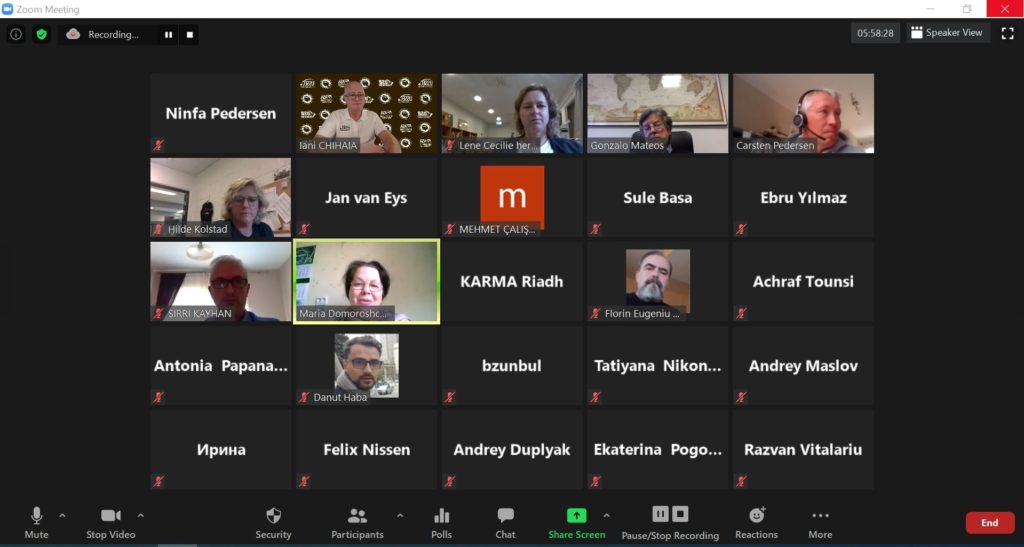
“Typically, U.S. soybean harvest starts in early September and rains can delay the process,” commented Dr. Iani Chihaia, USSEC consultant for South-East and South-Central Europe during his introductory speech during the “Novelties and Key Knowledge Gaps in Soy Feed Ingredients Quality Control. “However, dry weather is expected to prevail for the coming weeks as well, which signals swift soybean harvesting in the core regions of the Midwest.”
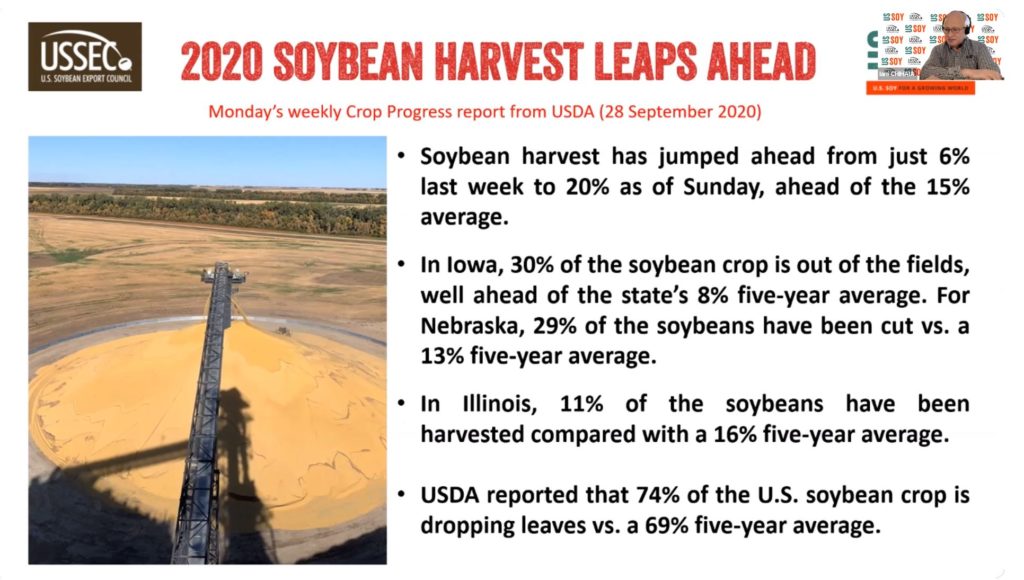
Crop conditions are little changed this late in the season, but harvest pace picked up last week according to the weekly Crop Progress report from the U.S. Department of Agriculture (USDA). The drier pattern in the Plains, southern and western Midwest, Delta, and Southeast will favor corn, soybean, and cotton harvesting. Rains in the northeastern Midwest should result in only minor harvest delays for corn and soybeans, according to the latest USDA report. As for the country’s soybean yield, USDA forecasts it at 51.9 bushels/acre, up 9% on the year, and output at 117.38 million metric tons (MMT) in 2020-21, up 22% year on year.
“As the European customers of U.S. Soy are growing more concerned about the sustainability of the soy imported in the EU, we informed the audience from our events about the U.S. Soybean Sustainability Assurance Protocol (SSAP). Through this protocol, the U.S. soy farmers demonstrate the sustainability of U.S. Soy to international and domestic customers.” stated Dr. Chihaia. “Based on existing aggregated data collected from farmers nationwide who participate in national conservation programs, the SSAP serves as proof that the U.S. soy crop is produced under a system of sustainability that includes everything from water conservation to energy use.”
Another important strength of the U.S. Soy industry discussed during the digital events is the reliability and efficiency of the U.S. transportation system, along with all the advantages for the U.S. soybean farmers and exporters. The barge transport of soybeans is the most economical, efficient, and sustainable method for U.S. Soy. Additionally, the whole transportation infrastructure supports the fast and efficient movement of soybeans from areas of surplus to areas of deficit, which ensures domestic and international end-users will receive a continuous, reliable supply of U.S. Soy, which means that international soy customers can rely on a system with excellent delivery predictability.
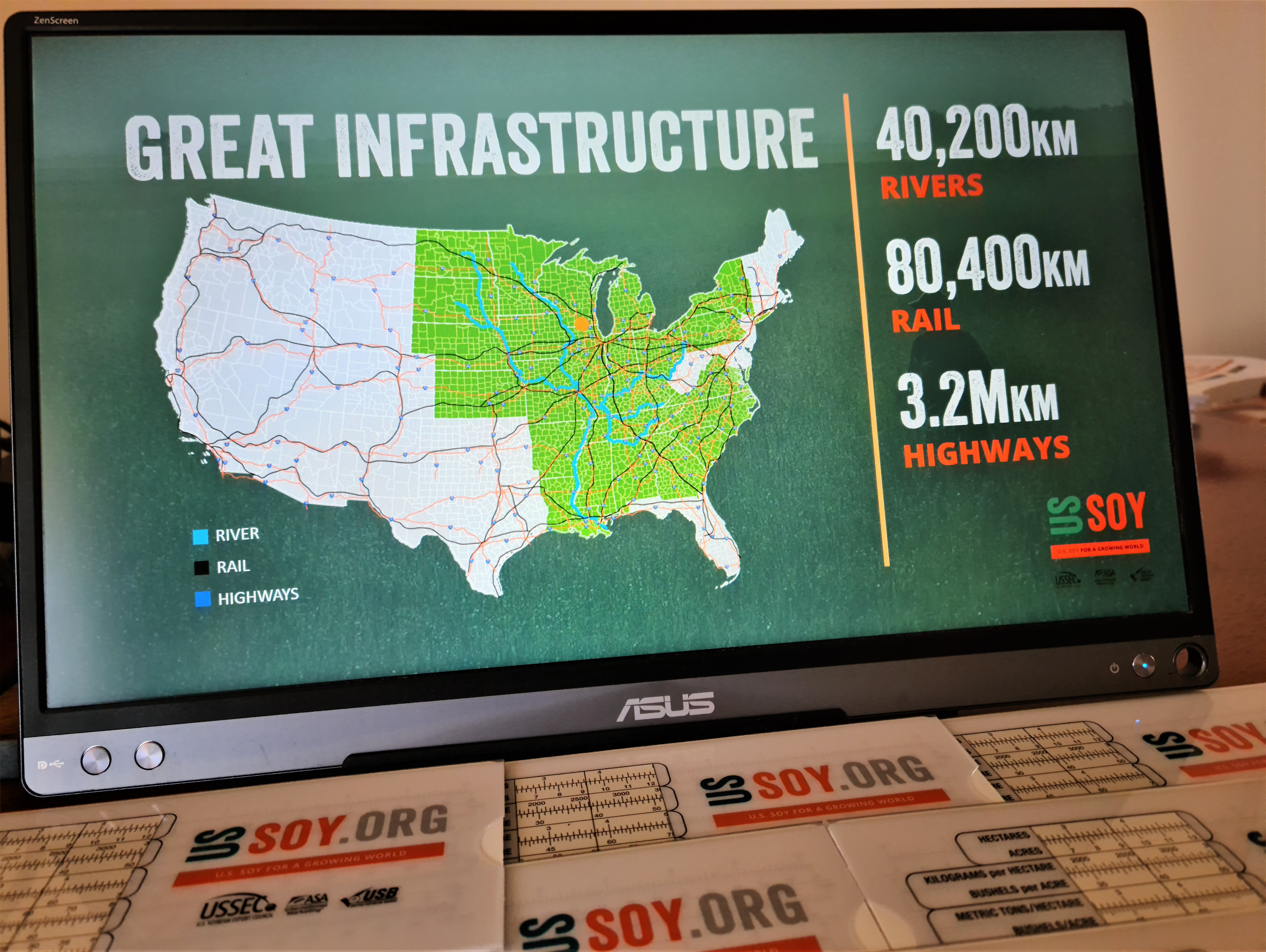
The U.S. soybean industry remains open for business. This was the key message delivered to U.S. soy customers by Jim Sutter, USSEC CEO. “We have great quality U.S. Soy, we have good supplies of it, and we have a great export infrastructure that can ship it to buyers throughout the world,” said Sutter. He added that not only are growers producing soybeans, but they’re doing so sustainably. “It starts on the farm and today we have such a fantastic, sustainable footprint in agriculture.” Importers can verify sustainable soybean production through the SSAP.”
